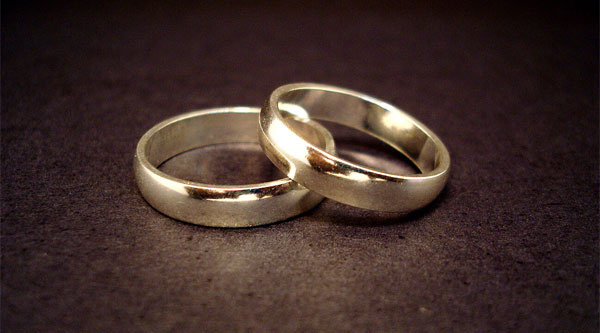Dirty Gold
Source: greenamericatoday.org

The gold industry is responsible for releasing toxins and adversely affecting communities and workers around the world.
When the Canadian mining company Manhattan Minerals wanted to open a gold mine in the town of Tambogrande in northwestern Peru, they promised to provide jobs and tax revenue, to build infrastructure, and to erect new homes for the families who would be relocated away from the mine’s area. Local residents weren’t willing to accept the deal, though. They feared that pollution from the mine would destroy agriculture in their valley, which produces 40 percent of Peru’s limes and mangos.
“I’ve been to other mining communities, so they can’t lie to me,” town clerk Rodrigo Zapata told the Associated Press. “We know it’s going to pollute the land and water. In 20 years, it will put an end to the life we’ve always lived.”
Tambogrande residents organized protests against the mine for years, and Peru’s government finally rejected Manhattan Mining’s proposal on official grounds that included an inadequate environmental impact assessment. For now, Tambogrande residents need not fear the human rights abuses and environmental devastation that so often accompany gold mining, but many other communities are not so fortunate. Read on to learn about the concerns surrounding gold mining and what you can do to help solve these problems.
Toxic Treasure Hunt
According to Payal Sampat in a Worldwatch Institute report (State of the World 2003), the process of mining, processing, and refining minerals “consumes close to ten percent of world energy, spews almost half of all toxic emissions from industry in some countries, and threatens nearly 40 percent of the world’s undeveloped tracts of forests—while generating only a small share of jobs and economic output.”
Though all mineral mining is energy-intensive and polluting, the environmental impacts of gold mining are particularly severe. The majority of gold mining today takes place in “open-pit” mines, where machines move massive amounts of earth from an area and leave enormous craters, some so large that they’re visible from space. The ratio of discarded earth and rock to marketable gold is particularly high: according to Sampat, about 300,000 tons of wastes are generated for every ton of marketable gold, or “roughly three tons of waste per gold wedding ring.”

Also, the waste that gold mining generates contains toxic substances that can pollute air, soil, and water. Generally, ore containing gold is crushed and treated with a cyanide solution that bonds to the gold and drains it from the rock. Tailings—the processed rock slurries that remain after the gold has been extracted—are often contaminated with poisonous cyanide.
The cyanide-leaching treatment of ore can also release other toxic heavy metals, such as arsenic and mercury, contained in the rocks. Any sulfide minerals (such as marcasite) present in the rocks can also begin to react with water, air, and bacteria to create acidic water in a process known as acid mine drainage.
In some countries, it is still legal to dump tailings directly into rivers or oceans, and some mining operations have been found doing so even in countries where it’s illegal. Instead of dumping tailings, many mining companies contain them in impoundments; however, leaks, spills, or complete failures of these impoundments can release cyanide, heavy metals, and sulfuric acid, resulting in fish kills, soil and water pollution, and damage to human health. In 2000, when a gold-mining tailings dam broke in Romania, 100,000 cubic meters of waste water containg cyanide and heavy metal poured into the Lapus River and eventually made its way into the Danube River in Hungary, where the government reported that 165 tons of fish died. In mining operations where tailings are allowed to dry in the open air, they can generate dusts containing metals and suspected carcinogens such as arsenic, cadmium, and chromium.
Before cyanide leaching became a popular technique in gold mining, miners used mercury to bind to gold and separate it from the ore. Today, many artisanal miners in places such as Brazil’s Amazon basin and Papua New Guinea still use mercury in small-scale mining operations. Exposure to high levels of mercury can permanently damage the brain and kidneys, and mercury persists for years in the environment.
After gold is extracted from rock, it is further refined through smelting, a process that subjects the gold to intense heat. Sampat reports that the smelting of all metals worldwide emits 19 million tons of sulfur dioxide, which causes acid rain, each year.
Gold's Human Toll
Gold mining’s environmental impacts can take a heavy toll on the health of those who work in or live near mining operations.
According to the International Labour Organization (ILO), “the toll of death, injury, and disease among the world’s mineworkers means that, in most countries, mining remains the most hazardous occupation when the number of people exposed to risk is taken into account.” Although data on injuries is limited, the ILO reports that the number of workers facing premature disability or death from occupational diseases such as pneumoconiosis (a chronic respiratory disease caused by repeated inhalation of dust) is significant.
Communities that will be affected often receive too little consideration when a government grants mining leases. National governments are often so eager to attract mining companies that they subsidize mining operations and make laws that the companies will find favorable. Sampat reports that since 1990, more than 100 countries, most of them in the developing world, have rewritten laws in order to attract foreign investment in mining; changes include allowing 100-percent foreign ownership of mines and letting companies repatriate all profits. The mining jobs won’t necessarily even go to local residents, since mining companies require skilled labor and may bring trained workers from elsewhere to work in a new mine.
In their recent report, “Dirty Metals: Mining, Communities, and the Environment,” nonprofits Earthworks and Oxfam America note that most large-scale mining projects operate for between 10 and 40 years, and that mine workers laid off after mine closures are likely to remain unemployed for long periods of time. So, even if a mining community did benefit economically during a mine’s operation, its economic upturn is likely to be short-lived. Mining activities are also not a safe bet for national economic growth. Sampat reports that countries whose economies are dependent on minerals mining grow more slowly, or even experience negative economic growth.
Local residents may also lose their homes altogether to a mining operation. Earthworks and Oxfam America explain that many communities in the developing world, as well as some indigenous groups in the industrialized world, lack legal titles to the lands where they have lived for generations. (As much as 50 percent of the gold produced between 1995 and 2015 will come from indigenous lands, reports Sampat.) When the government grants leases to lands that have traditionally belonged to these communities, residents face eviction, often with little or no compensation.
“Especially in parts of Africa and the Pacific region, large-scale mining tends to become ‘militarized,’” the “Dirty Metals” report states. A country’s police or armed forces may forcibly evict residents and perpetrate other human rights abuses to quell community opposition to mining operations. In West Papua, Indonesia, human rights investigators have documented rape, torture, extrajudicial killings, and arbitrary detention committed by the Indonesian military against indigenous communities near the Grasberg gold and copper mine operated by Freeport McMoRan.
Altering An Industry
Earthworks and Oxfam America have launched a “No Dirty Gold” campaign to address some of the detrimental effects of gold mining. Keith Slack, Oxfam America’s co-coordinator of the campaign, explains that Earthworks and Oxfam America decided to focus their campaign on gold because “80 percent of the gold produced today goes to jewelry, so you can make a direct connection between the end product and the conditions under which it was produced.”
“Today, options don’t exist for consumers who want to buy gold that was mined under ethical circumstances,” continues Slack. “The industry won’t take the steps to make it available until they feel pressure from jewelry companies and consumers.”
The campaign is not calling for a boycott; rather, they’re asking consumers to tell retailers that they’d like to have a responsible alternative available for purchase. Since most mining companies don’t deal directly with consumers, the best way for us to communicate with them is through jewelry retailers. Many of these retailers are disturbed by the prospect of gold’s reputation being tarnished and will urge the mining companies to adopt more responsible practices. Since the No Dirty Gold campaign launched, the Jewelers of America, a national association of jewelry retailers, has stated its support for the goals of the campaign, and jewelry giant Tiffany has used a full-page ad in the Washington Post to call for mining reform.
Even the World Bank Group, which finances numerous mining projects around the world, has recognized the need to implement reforms in its lending for extractive industries (which include oil and gas as well as mineral mining). A report comissioned by the World Bank recommends holding extractive projects to certain standards—many of which are simiar to the standards the No Dirty Gold campaign is calling for—that include:
* Obtaining free prior and informed consent from communities directly affected by the projects;
* Developing guidelines for waste disposal and management, and the use of toxic substances;
* Providing sufficient planning for project closure, including the creation of a fund or mechanism to pay for social and environmental costs; and
* Designing and implementing projects in a manner consistent with applicable international human rights standards.
It’s becoming clear that mining companies that ignore the concerns of communities, investors, or the general public can face consequences. When Denver-based Newmont Mining Corporation attempted to expand a gold mine in Cajamarca, Peru, two weeks of violent protests ensued, and the company finally asked the government to revoke its permit to expand mining operations. At the same time, Newmont was in the news for its disposal of gold-mining waste in Indonesia’s Buyat Bay. Newmont says that it’s following all applicable laws in disposing of this waste, and that the levels of pollutants in the bay are within legal limits, but residents claim that the gold mine’s waste is responsible for the skin rashes, tumors, and other illnesses that have become common in the area since the mine opened.
“The mining industry is aware that it has an image problem and that it has to do something,” says Slack. “But they haven’t yet made the real changes that are needed to fix the problem.”
What You Can Do
Here are steps you can take to reduce gold mining’s impact on communities and the environment, and to help reform mining practices worldwide:
Reduce, Reuse, Recycle: Before buying gold jewelry, ask yourself if you really need another necklace or tie clip. If you are seeking gold accessories, see if friends or family members have items that they’re ready to pass on, or check secondhand shops and eBay. If you already have a gold piece that doesn’t fit or isn’t quite to your tastes, ask a local jeweler to alter it for you. Some may even be able to melt down your old pieces and recast them as something entirely new. Or, look for new jewelry made out recycled gold—greenKarat is one
company that offers commitment bands and other jewelry made from recycled 14K and 18K gold.
Support the No Dirty Gold campaign: Sign the campaign pledge expressing your support for the campaign’s goals to end destructive mining. If you’re shopping for gold jewelry, let retailers know that you want to see ethically mined gold become available (the campaign offers materials you can bring to retailers to explain what needs to change, or you can take along a copy of this article). Students can distribute campaign materials at venues where class rings are sold.
Check your investments: If any of your money is invested in gold mining companies, you may be able to use your shareholder voice to call on the company to change. In December of 2003, Boston Common Asset Management filed a shareholder resolution with Newmont Mining Corporation, the world’s largest gold-mining firm, calling on the company to prepare a report on the risk to the company’s operations, profitability, and reputation from its social and environmental liabilities. If you invest in a mutual fund, you can ask the fund’s investor relations department if they have criteria that mining companies must meet in order to be included in the portfolio, or if they will file shareholder resolutions at any mining companies in which the fund holds stock.
No matter which of these steps you decide to take, you can help ensure a safer, healthier, and more prosperous future to gold-mining communities around the world.
Source: greenamericatoday.org






















